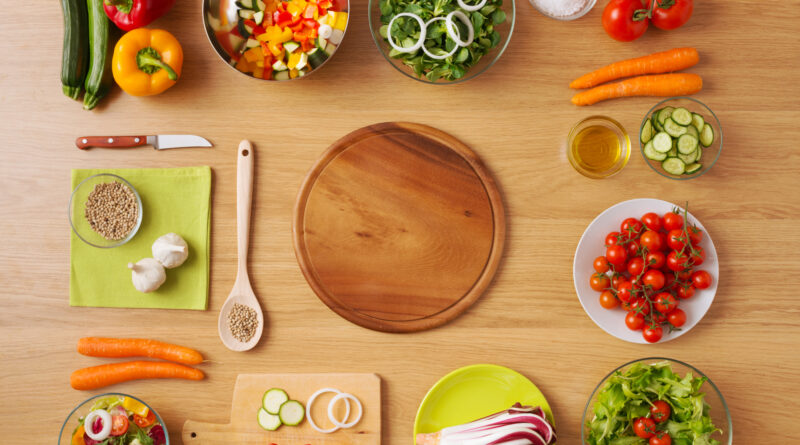Single-Person Households Food Information-Seeking
Single-Person Households Food Information-Seeking
Siyao Cheng, University of Illinois at Urbana-Champaign
Lo Lee, University of Michigan, Ann Arbor
Melissa Ocepek, University of Illinois at Urbana-Champaign
Merin Oleschuk, University of Illinois at Urbana-Champaign
Introduction
Information-seeking behavior permeates almost every aspect of everyday life. The ways people seek information have increasingly diversified, especially with the growing popularity of the Internet. Information searches, both online and offline, are also vividly reflected in the interaction between people and their various stages of food preparation. For example, some people use social media, cookbooks, food media, and so on to plan their menus or learn to cook (Bold, 2012; Brimble, 2020).
Living alone has become more common in recent years (U.S. Census Bureau, 2021). Due to the COVID-19 outbreak, most families and people who live alone were asked to stay home to comply with state-enforced orders (Centers for Disease Control and Prevention, 2020). This could have resulted in dining alone for many in the single-living population. Despite this growing trend, discussions about food preparation have yet to focus on the growing number of people who live alone in the information science field, except for the substantial advancements that have been made in investigating culinary enthusiasts (Hartel, 2006; 2010; Tsai & Chen, 2020). Here, we pay attention to the intersections between consumers who live alone, their approaches to seeking food preparation information, and variations in their search practices.
—People who live alone most often search for information about food on social media sites.—
Information-seeking Behavior about Food Varied from Person to Person
We interviewed and surveyed people living alone in Illinois to understand the resources they used when seeking food-related information. In one designated week, we also collected photos and food diaries from participants as complementary approaches to help us understand their food intake and cooking process. The compiled answers reflected our participants’ strategies for seeking food-related resources, as shown in Table 1.
For people who live alone, planning what to eat and how to cook involves digital and physical domains. The information they sought included food nutrition, menu planning, how to cook a specific recipe, and how to cook in general. During the conversation with participants, a majority of participants stated that culinary information on popular social media platforms provides them with creative food choices. Some participants claimed that the Internet in general offers a multitude of food topics such as recipes, nutritional information, etc. Another group said that they used hard-copy cookbooks, some of which have been passed down from generation to generation. TV cooking shows can also inspire food preparers with new ideas; word-of-mouth recipes heard from families, friends, clubs, and church members—even chiropractors—were consulted when making decisions about food. Additionally, some stated that they combined different food-related resources when planning their meals; for example, a few individual participants referred to social media and text-primary sources while the others mentioned Google and word-of-mouth. Overall, participants’ responses revealed how they navigate the information environment in their everyday lives, and that the ways of navigating varied from person to person.
Social Media as the Most Popular Channels for Seeking Information about Food

People who live alone most often search for information about food on social media sites. YouTube, Pinterest, TikTok, Instagram, and other social media platforms that provide entertainment and information were commonly utilized. Some participants acquired information on food nutrition and reshaped the way they cooked by following several influencers on social media. Furthermore, we found that engaging with food-related information via online communities, such as Facebook and Reddit groups, not only creates a bond among people living independently but also links people living alone with a variety of information. To a lesser but significant degree, our participants still generally appreciated offline resources like audio-visual and text-primary food media. Surprisingly, Table 1 displays that word-of-mouth is the least prominent approach referred to by the participants, compared to other categories. The data in Table 1 shows the multi-dimensionality of information-seeking behaviors among solitary individuals, but importantly, social media is more popular than any other resource in terms of seeking food information.
Table 1. Responses to food-related information sources prompt.
| Categories | Source types | Participants | Total |
| Social media | YouTube | Arnold, Deb, Dennis, DeShawn, Jordan, Kim, Sadia, Tyler | 8 |
| Angela, Ellen, Kim, Renate | 4 | ||
| Dennis | 1 | ||
| TikTok | Mai, Renate | 2 | |
| Ashley, Justin, Kim, Nancy, Marsha | 5 | ||
| Barbara, DeShawn, Jordan, Justin, Mackenzie, Mai, Sadia, Sophia | 8 | ||
| Social media in general | Tyler | 1 | |
| Total | 29 | ||
| Audio-visual food media | TV shows | Beatrice, Bev, Bill, Dan, Donna, Jenny, Kim, Nancy, Thomas, Tyler | 10 |
| Food-related websites | Anita, DeShawn, Glenn, Isabel | 4 | |
| Netflix | Arnold, Sarah, Shanice | 3 | |
| Podcasts | Viola | 1 | |
| Total | 18 | ||
| Text-primary food media | Newspaper | Ellen, Joan, Nancy, Sarah | 4 |
| Magazines | Isabel, Jordan, Lauren, Maria | 4 | |
| Cookbooks | Bev, Craig, Donna, Lauren, Mai, Maria, Marsha, Mason, Thomas | 9 | |
| Flyers | Irene | 1 | |
| Books | Dan | 1 | |
| Total | 19 | ||
| Search engine | Allison, Ashley, Bill, James, Jenny, June, Lauren, Mai, Tara, Thomas | 10 | |
| Others | Internet in general | Anita, Betty, Bev, Craig, Glenn, Isabel, Joan, Lauren, Miguel, Renate, Robert, Sabrina Sharon | 13 |
| Word-of-mouth | Beatrice. Joan, June, Mason, Lauren, Renate, Sarah, Tara | 8 |
Conclusion and Future Opportunities
The increasing population living alone has drawn more attention from scholarly discourse and popular media on various topics. Nonetheless, we see little research on how those people use information about food, and the more groups we study help create actual understanding to build better systems within the field of information science. Mapping single-living populations’ information landscape can provide a broad picture of how they eat and cook and offer valid inferences to support those who experience unforeseen life changes during the current health crisis. Hence, this new perspective scrutinizes information-seeking behavior in the context of living alone. We demonstrate that single-person households leverage various platforms, primarily social media, to seek information about different aspects of eating and cooking and promote participation in culinary practice.
With our current multi-method approach, we plan to continue analyzing the data to cover non-traditional forms of information, probing, for example, whether such people can obtain useful food-related information by recalling their childhood memories or personal experience. It is noteworthy that we do not expect to take the stand of nutritionists to judge people who live alone regarding their eating and cooking habits. Instead, we aim to paint a broader picture to encourage future work in information science to help this growing population have fewer barriers to accessing information sources on food, eating properly, and mitigating the stigma of living and eating alone.
References
Bold, C. (2012, May 2). Most people discover food using social media and food blogs, New Study says. Kitchn. Retrieved December 9, 2022, from https://www.thekitchn.com/most-people-now-get-recipes-from-social-media-food-blogs-new-study-says-food-news-167034
Brimble, L. (2020, October 28). More than 70% of adults use social media for recipes instead of cookbooks, survey finds. The Independent. Retrieved December 9, 2022, from https://www.independent.co.uk/tech/recipes-online-cookbooks-food-inspiration-social-media-facebook-instagram-b1397624.html
Centers for Disease Control and Prevention. (2020, September 3). Timing of state and territorial COVID-19 stay-at-home orders and changes in population movement – United States, March 1–May 31, 2020. Centers for Disease Control and Prevention. Retrieved January 9, 2023, from https://www.cdc.gov/mmwr/volumes/69/wr/mm6935a2.htm
Hartel, J. (2006). Information activities and resources in an episode of gourmet cooking. Information Research, 12(1). http://www.informationr.net/ir/12-1/paper282.html
Hartel, J. (2010). Managing documents at home for serious leisure: A case study of the hobby of gourmet cooking. Journal of Documentation, 66(6), 847–874.
Tsai, T. I., & Chen, H. Y. (2021). Examining cooking hobbyists’ information-seeking behavior in different situations and in different stages from a serious leisure perspective. Data and Information Management, 5(1), 167–173.
U.S. Census Bureau. (2021, November 29). Census Bureau releases new estimates on America’s families and living arrangements. Retrieved August 4, 2022, from https://www.census.gov/data/tables/2021
Cite this article in APA as: Cheng, S., Lee, L., Ocepek, M., & Oleschuk, M. (2023, February 21). Single-person households food information-seeking. Information Matters, Vol. 3, Issue 2. https://informationmatters.org/2023/02/single-person-households-food-information-seeking/





